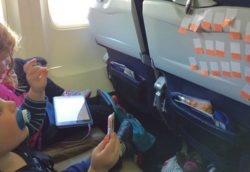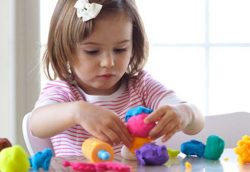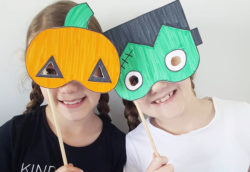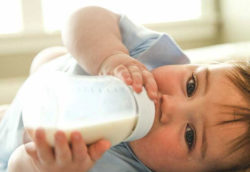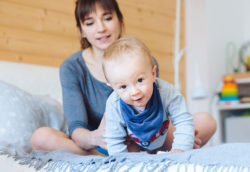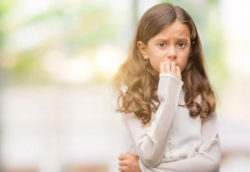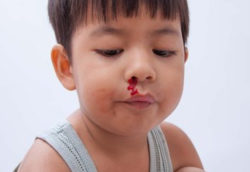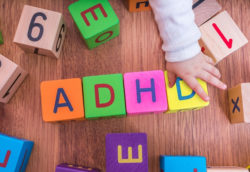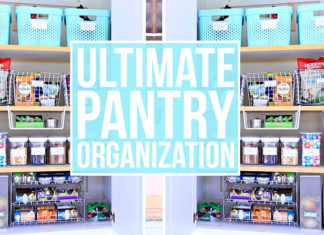Separation anxiety is quite a normal stage of development for infants and toddlers. Young children often experience a period of separation anxiety, but most children outgrow separation anxiety by about 3 years of age. In some case, severe separation anxiety in toddlers is a sign of a more serious condition which is known as separation anxiety disorder, starting as early as preschool age.
Separation anxiety (R) refers to the excessive fear or anxiety about separation from home or an attachment figure. The children with separation anxiety may cling to their parents excessively and refuse to go to sleep without being near them.
Less often, separation anxiety disorder can also occur in teenagers and adults, causing significant problems leaving home or going to work. But certain ways can help to deal with it. In this article, we will focus on what is separation anxiety disorder, its sign and symptoms and the various ways to deal with separation anxiety in toddlers.
What is Separation Anxiety in Toddlers?

Separation anxiety in toddlers refers to excessive fear or anxiety about separation from home or an attachment figure. In previous versions of the DSM IV-TR, the separation anxiety was only occurring to children under the age of 18, but the diagnosis is now categorized that separation anxiety can be present at all stages of life.
Separation anxiety is a normal stage in an infant’s development. It usually ends at around the age of 2, when toddlers begin to understand that a parent may be out for some time now but will return later.
Children with separation anxiety may cling to their parents excessively, refuse to go to sleep without being near a major attachment figure, being reluctant to attend camp or sleep at friends’ homes, or require someone to be with them when they go to another room in their house. Children also commonly experience physical symptoms when separation is anticipated or occurs, such as headaches, nausea, and vomiting.
When separation does happen, children may seem withdrawn, sad, or have difficulty concentrating on work or play, depending on the age of the toddler. Some children become severely homesick when separated from attachment figures, regardless of their age. The experience of separation anxiety is often frustrating for family members and can lead to resentment and conflict in the family.
Separation anxiety is the most prevalent anxiety disorder in children under the age of 12. This condition is equally common in boy and girl child.
Sign and Symptoms of Separation Anxiety in Toddlers:

The following are the most common signs and symptoms of separation anxiety in a toddler. However, each child may experience symptoms differently as per their age. Symptoms(R) may include:
- Refusal to sleep alone
- Repeated nightmares with a theme of separation
- Excessive distress by separation from home or family occurs or is anticipated
- Excessive worry about getting lost from family
- Refusing to go to school
- Fearful and reluctant to be alone
- Frequent stomachaches, headaches, or other physical complaints
- Muscle aches or tension
- Excessive worry about safety of self
- Excessive worry about or when sleeping away from home
- Excessive “clinginess,” even when at home
- Symptoms of panic or temper tantrums at times of separation from parents or caregivers
The symptoms of separation anxiety may resemble other conditions or psychiatric problems. Always consult your child’s doctor for a diagnosis.
How to Deal with Separation Anxiety in Toddler?

There are various ways to deal with separation anxiety in toddler. Some of the ways are as follows:
1. Look for Patterns:
Take note of situations where your child shows some signs of becoming anxious or get prone to develop any kind of anxiety such as people who cause them particularly stress or places that upset them such as daycare or a certain relative’s home. Behaviours that are exhibited in their distress and the patterns needed to be monitored. You can also see if there are particular person or activities which capture your child’s attention. If there are particular toys or books which help your child to feel settled and ensure they take them with them if they’ll be staying with relatives or at a daycare center.
2. Take Things One Step at Time:
Before you leave your child for the day or evening, there are a number of steps to go through that will help to limit the separation anxiety in toddlers. Try to start telling them calmly and reassuringly where you’re going and when you’ll be back and at what time. Make sure you stick to it as your child will be waiting for you to come back in the time you mentioned.
3. Build-in Extra Time:
Make sure you have enough time to spend a few minutes settling your child into their surroundings before you leave for the work or outside. In a few weeks of practicing this, your child will be more than happy to be away from you, probably much to your dismay. This will help your child to cope up with your absence and get rid of the separation anxiety in toddlers.
4. Create Quick Good-Bye Ritual:
Parents who fear their kid’s separation anxiety may try to sneak out of the house while he’s distracted. Big mistake. This approach may save you the pain of watching your child cry, but it can actually make his separation anxiety more severe. If he thinks you might disappear at any given moment without notice, he’s not going to let you out of his sight.
This also goes for nighttime departures. Some parents try to avoid drama by putting their child down for the night before the babysitter arrives. That’s all well and good if he stays asleep. But if he wakes up, he’ll be surprised – and possibly terrified – to find you gone.
5. Be Consistent:
Try to do the same drop-off with the same ritual at the same time each day you separate to avoid unexpected factors that lead to separation anxiety whenever you can. A routine can diminish the heartache and will allow your child to simultaneously build trust in her independence and in you and that will help in getting way to deal with severe separation anxiety in toddlers.
6. Attention:
While separating from the child for any work outside the home, try to pay more attention while separating. The full attention, loving, affection will help you to deal with the ways of separation anxiety issue in toddlers.
7. Keep Your Promise:
You’ll build trust and independence as your child becomes confident in her ability to be without you in case you stick to your promise of return. The biggest mistake I ever made in regard to separation anxiety in my child was returning to class to “visit” my son about an hour after a terrible transition took place. I was missing him, and although the return was well-intended and conveyed, I not only extended the separation anxiety, we started all over again in the process.
8. Help Your Child to Look Ahead:
Your kids understand much more than they can say. Just prepare her for your departure for work by telling her where you’re going and when you’ll be back and at what time. Make sure you tell her who will watch her and what sort of activities she can look forward to doing while you’re away from home.
It’s also quite important to talk about your child’s sitter with enthusiasm and spirit. Your child looks ahead for reassurance, and she’ll be inclined to agree if you say things like, “I think Bella is so much fun, don’t you think so?” To gauge how much of your conversation she’s absorbing and try to follow up with simple questions such like, “Where am I going tonight?” or “Who’s going to watch you while Mommy and Daddy go to dinner?” etc.
9. Talk About the Plans for the Day:
Try to distract the child a bit by asking about her day as it’s been planned and talk about the plan for the day so that she thinks about not only where you’re going but also what she’ll be doing in a day. This gives perspective to the anxious child.
Children might be deeply afraid that they’ll never see their parents again or stay away from parents. Giving clear expectations of where and when you’re going and returning will help the children to take away that fear. All children are different but reminding them that they’ve been through this before can be a useful perspective for children in general. Be gentle and calm, but clear and focused. That helps children follow your lead and calm them down as well from separation anxiety.





